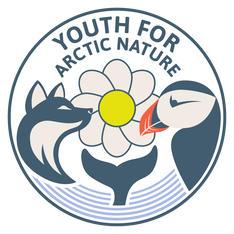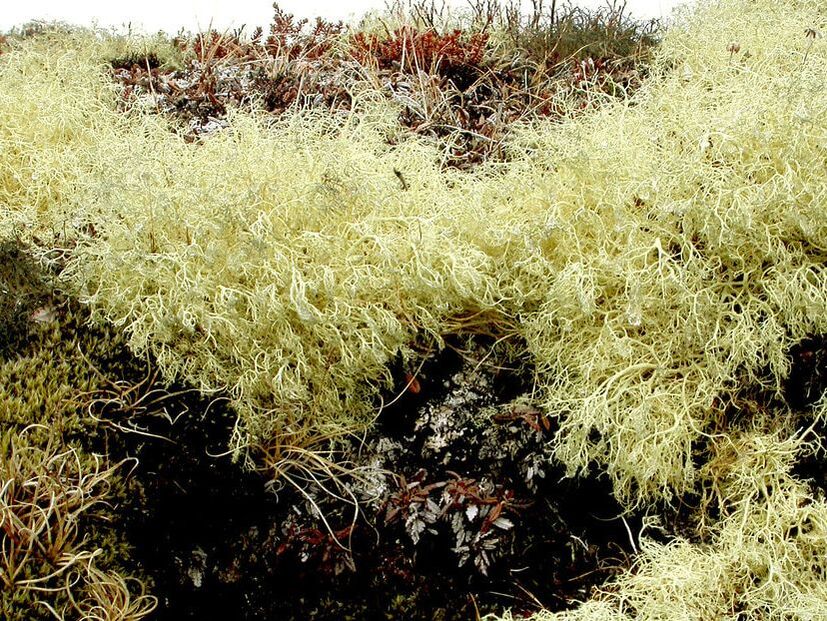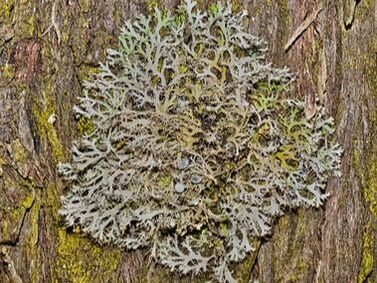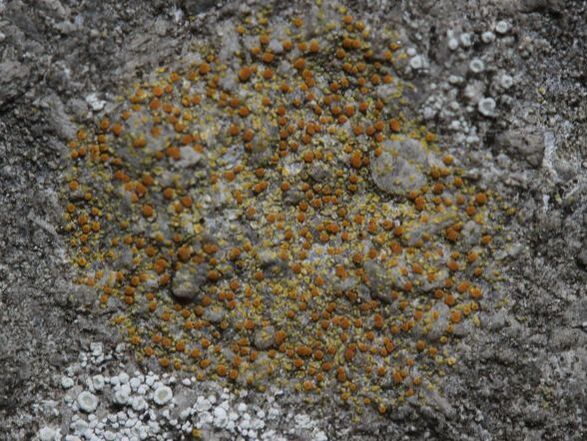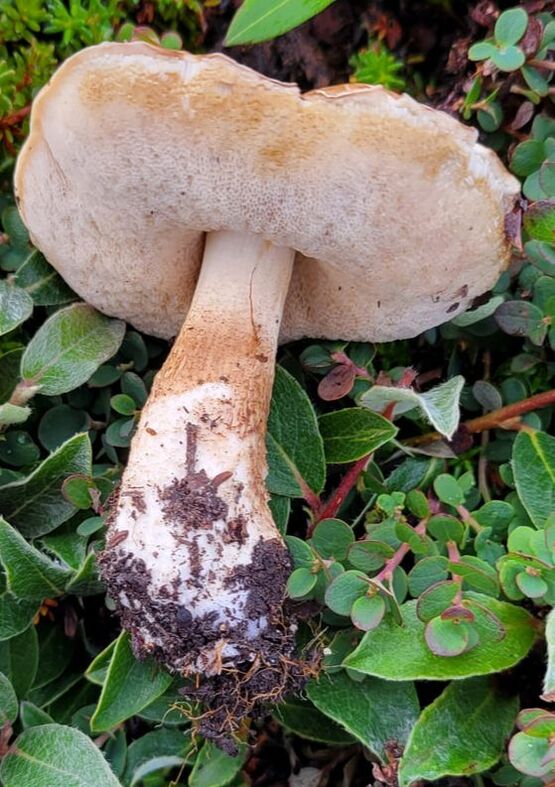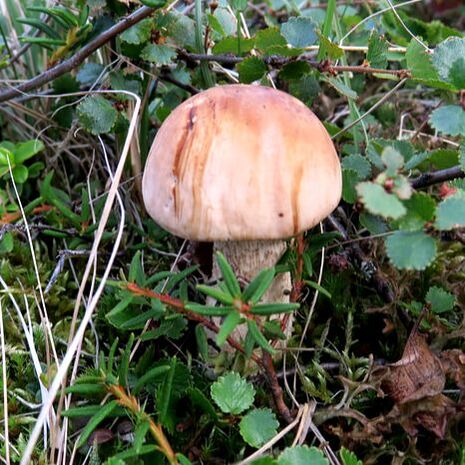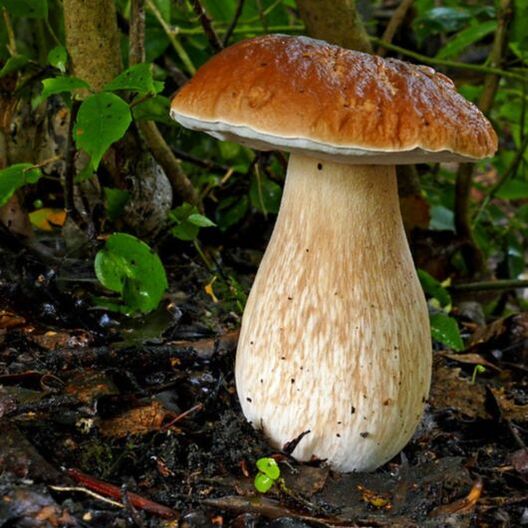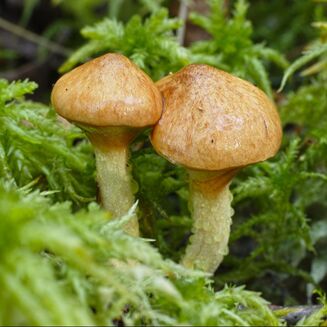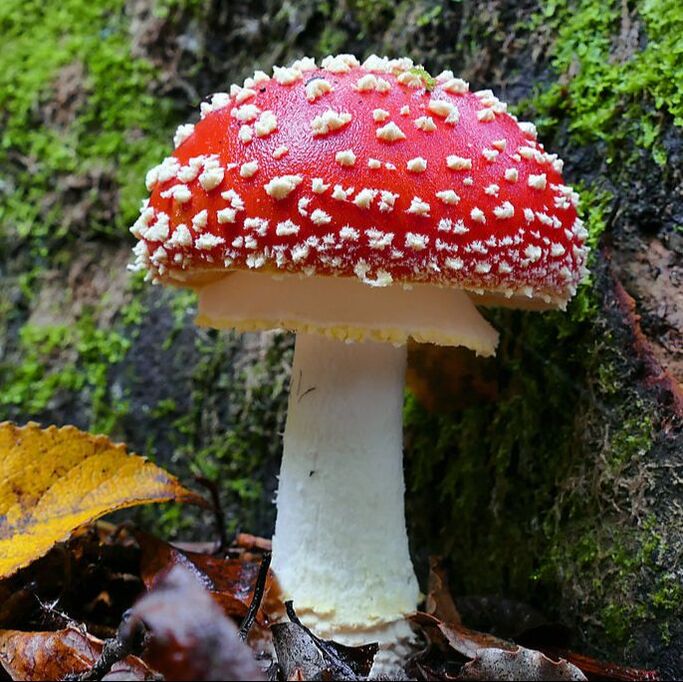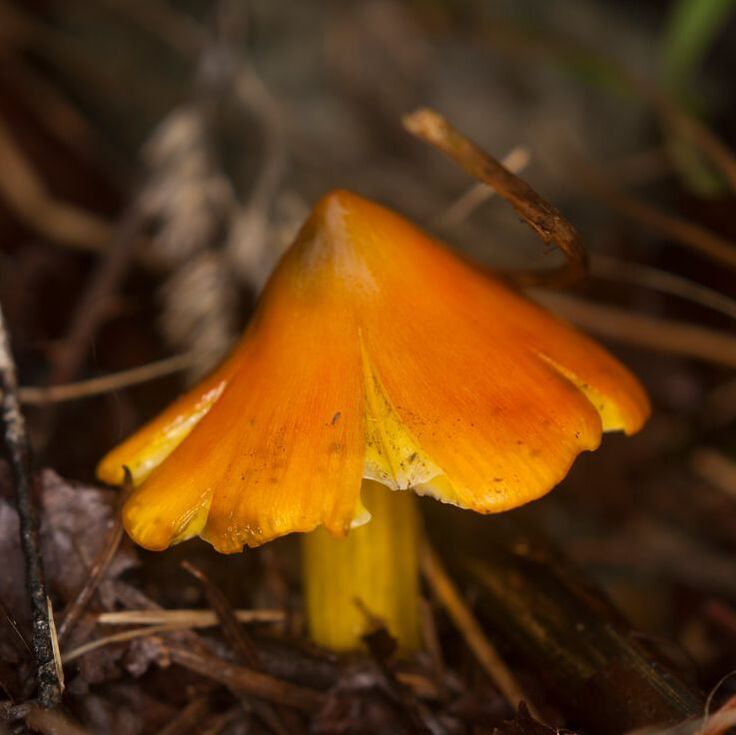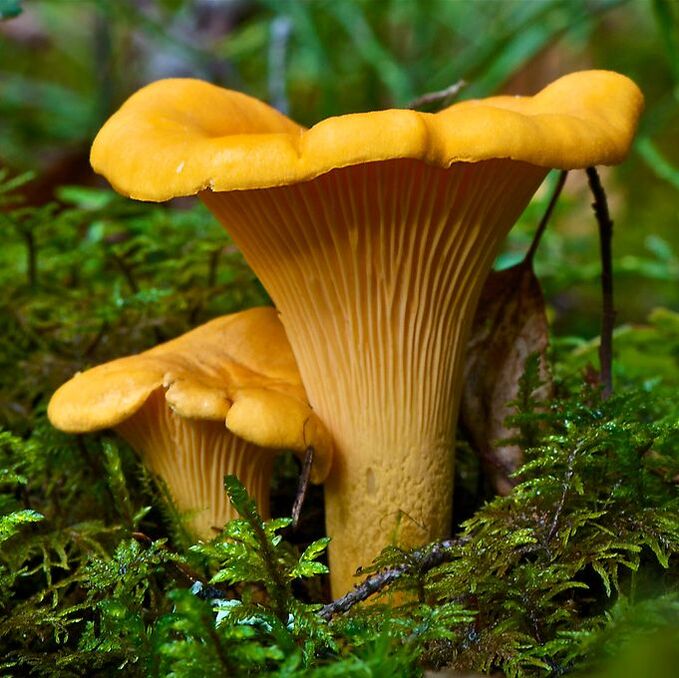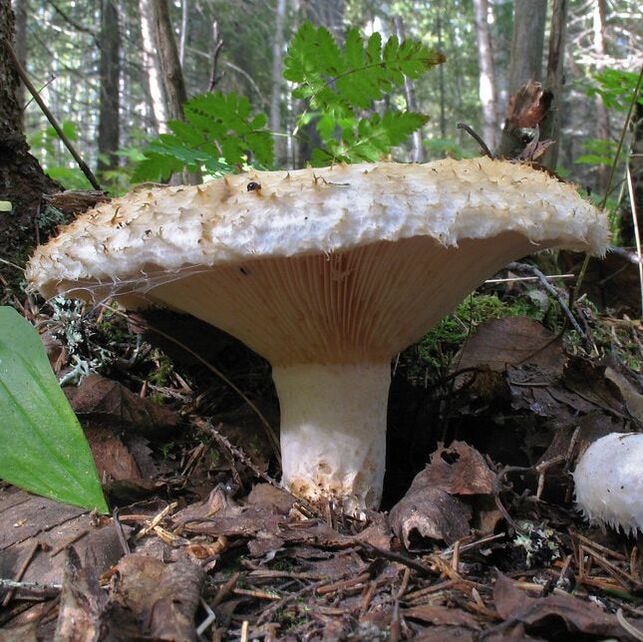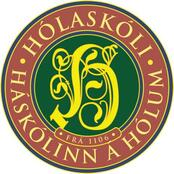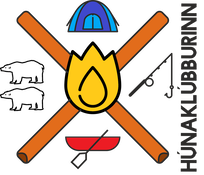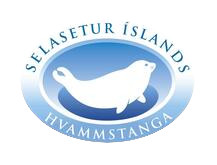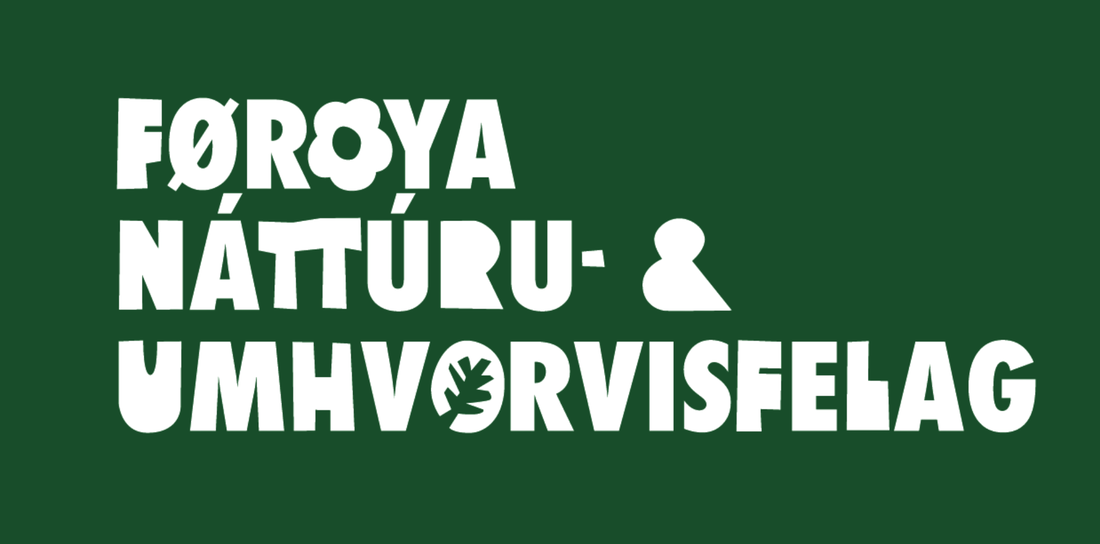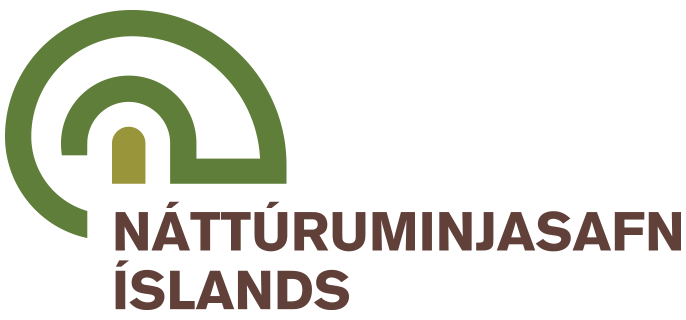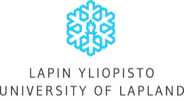THIS SECTION IS UNDER CONSTRUCTION
The fungi are a group that includes, for example, yeasts, molds, and lichens. Fungi are not plants or animals, but form their own separate group of organisms. This group is one of the most diverse in the Arctic, with CAFF estimating that there are around six times more fungi species than plant species in the region. However, it is hard to study fungi because many species are found only underground or are microscopic - of the 13,000 species Arctic fungi species estimated by CAFF, less than 5000 are known. We will focus on describing Arctic fungi which have parts that can be observed easily, specifically lichens and mushrooms.
Lichens are very important organisms in Arctic ecosystems. Arctic lichens are uniquely adapted to low temperature and dry environment, with some species being able to grow even during the winter, under snow and ice. Many lichens are able to live both in the Low and High Arctic, and they can be the dominant vegetation in some areas, for example in the case of reindeer lichens. In addition to being an important food for some Arctic animals, especially reindeer, they have also been used by Arctic people for multiple purposes such as mild antibiotics, famine food, dyes, tinder, and more. Examples of lichens found in the East Atlantic Arctic include:
- The Witch's Hair Lichen Alectoria ochroleuca. Witch's hair lichen is a fruticose lichen, meaning it grows in leafless branches. It is found throughout the northern Hemisphere, as well as mountainous areas of central and southern America. It is found in all Low and High Arctic regions including in the East Atlantic Arctic (Greenland, Svalbard, Iceland, and Fennoscandia).
- The Eagle's claw Lichen Anaptychia ciliaris. Eagle's claw lichen is a foliose lichen, meaning it grows in flat leafless shapes. It is found in northwestern Russia, North America and Europe, including Iceland, the Faroe Islands, and throughout Fennoscandia.
- The Tree firedot Lichen Caloplaca holocarpa. Tree firedot lichen is a crustose lichen, meaning it grows in a thick crust. It has a circumpolar distribution, and is found throughout the East Atlantic Arctic around Greenland, in Svalbard, throughout Fennoscandia, the Faroe Islands, and in Iceland.
In some fungi, the reproductive organisms which produce spores grow above the ground and can be seen by the naked eye - these fruiting bodies are called mushrooms. Most of the time, they have stipes (equivalent to plants' stems) and caps, which can be used to identify them. Mushrooms are the best known parts of fungi, especially because they are eaten all over the world. Some are widely farmed, while some are most often found through foraging. Foraging for mushrooms is a traditional activity in many cultures, for example among the Skolt Sámi people of northeastern Fennoscandia where different types of mushrooms are used to make teas, foods, and medicine. More generally, it is a popular activity throughout Fennoscandia, and is becoming more popular in Iceland as reforestation efforts are creating habitats more suitable to edible mushrooms. However, it should be noted that mushroom picking can be dangerous if done without sufficient knowledge, because many edible mushrooms can easily be confused with toxic or even deadly mushrooms. True mushrooms belong to the Basidiomycota group, while other types of fungi considered to produce mushrooms belong to the Sac fungi Ascomycota. The latter group is more diverse, and also includes most of the fungi which produce lichens, such as the reindeer lichens and other examples given in the lichen section. Examples from both groups were presented, and they show the diversity of shapes that mushrooms can take in the Arctic.
|
Boletes are mushrooms that grow with stems that are clearly separated from their caps, and the surface under this cap, which bears the spores, looks like a sponge. All of the bolete mushrooms belong to a closely related group, but not all mushrooms in this group are boletes. Examples of boletes found in the East Atlantic Arctic include:
|
Spongy surface under the cap of a birch bolete
|
Gilled mushrooms are the most common and typical mushrooms. They have stems and caps like boletes, but instead of spongy tubes, they have gills under their caps. These gills are also called lamellae. Most gilled mushrooms are part of the same closely related groups, with some exceptions.
- The Fly Amanita Amanita muscaria is well known to be toxic and for its striking appearance.
- The Conical wax cap Hygrocybe conica is threatened in some arctic regions by human impacts.
- The Chanterelle Cantharellus cibarius is an iconic edible mushroom.
- The White milkcap Lactarius resimus is a russula.
Pictures
- "Cladonia asahinae. (pixie cup lichen)" by Bernard Spragg is marked with CC0 1.0.
- "Alectoria ochroleuca" by hordur.kristinsson is licensed under CC BY-NC 2.0.
- "Anaptychia ciliaris" by anpena is licensed under CC BY-NC-SA 2.0.
- "Caloplaca holocarpa" by Björn S... is licensed under CC BY-SA 2.0.
- "Leccinum rotundifoliae" by Luke Smithson is licensed under CC BY-NC 4.0.
- "King Bolete (Boletus edulis)" by Bernard Spragg is marked with CC0 1.0.
- "Třeboňsko - Suillus flavidus 01" by Xth-Floor is licensed under CC BY-SA 3.0.
- "Amanita muscaria." by Bernard Spragg is marked with CC PDM 1.0
- "File:'Witch's Hat', Hygrocybe conica (10055281924).jpg" by Scott Darbey from Canada is licensed under CC BY 2.0.
- "Cantharellus cibarius, Fries 1821 (Fungi Basidiomycota Agaricomycetes Cantharellales Cantharellaceæ)" by Elena Regina is marked with Public Domain Mark 1.0.
- "White milk-cap (Lactarius resimus)" by gennadyalexandrov is licensed under CC BY 2.0.
- "Calvatia Utriformis" by Ephemeral Impressions is licensed under CC BY-SA 2.0.
- "Leccinum rotundifoliae" by Николай Наконечный is licensed under CC BY-NC 4.0.
- "Evtl. Zunderschwamm / tinder fungus (Fomes fomentarius), Weg zur Sturmannshöhle (Schauhöhle), Allgäu, Bavaria" by anschieber | niadahoam.de is licensed under CC BY-NC-SA 2.0.
- "Iceland moss - Cetraria islandica" by Björn S... is licensed under CC BY-SA 2.0
References
- Alstrup, V., Christensen, S.N., Hansen, E.S., and Svane, S. (1992). The Lichens of the Faroes. Annales Societatis Scientiarum Færoensis, 40. https://timarit.is/page/930135#page/n55/mode/2up
- Arup, U. (2009). The Caloplaca holocarpa group in the Nordic countries, except Iceland. Lichenologist, 41(2), 111–130. https://doi.org/10.1017/S0024282909008135
- Dahlberg, A., Bültmann, H., Cripps, C.L., Eyjólfsdóttir, G.G., Gulden, G., Kristinsson, H., and Zhurbe, M. (2013). Flora. In Arctic Biodiversity Assessment (pp. 354–371). https://www.caff.is/assessment-series/arctic-biodiversity-assessment/215-arctic-biodiversity-assessment-2013-chapter-10-fungi
- Kristinsson, H., Zhurbenko, M. and Hansen, E.S. (2009). Panarctic checklist of lichens and lichenicolous fungi CAFF Technical Report No. 20, CAFF International Secretariat, Akureyri, Iceland.
